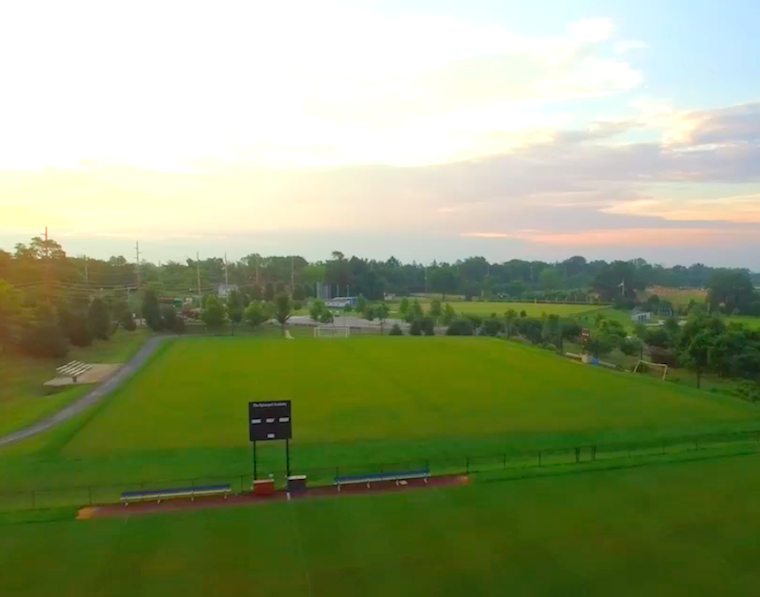For insight into plant growth regulator (PGR) application on turfgrass, SportsField Management reached out to some of the leading manufacturers of PGRs for turfgrass.
“I think PGRs are a very effective tool to help manage labor shortages,” said Mark Brotherton, portfolio leader at SePRO Corporation, manufacturer of Edgeless Concentrate. “They can provide clipping suppression for three to six weeks and eliminate one to two mowings per week while under growth regulation.”
Brotherton added that field managers have also had success mixing PGRs with their field paint, which can aid in stretching out application intervals, saving both labor and paint.
“Additionally, managers can make banded applications to edged turfgrass areas,” said Brotherton. “These applications are generally a higher PGR dose and offer extended length of growth regulation compared to a broadcast application.”
According to Syngenta, the company’s Primo Maxx can be applied up to two times the listed rate for extended growth suppression, when temporary discoloration and turf quality are not a concern.
“For enhanced regulation, Trimmit PGR can be used at maximum rates or mixed with Primo Maxx,” said Dean Mosdell, Ph.D., technical services manager, Syngenta. “Avoid use on dwarf-type bermudagrass, Poa annua (unless injury can be tolerated), and overseeded bermudagrass until after transition.”
According to Aaron Hathaway, technical services manager at Nufarm Americas Inc. (manufacturer of Anuew), PGRs can reduce growth enough to reduce clippings, but research has shown that any one PGR isn’t enough to slow growth enough to really skip regular mowing.
“The only way to reduce growth enough to reduce the amount of mowing necessary is to mix two PGRs together at high labeled rates,” said Hathaway. “This may be something sports field managers may utilize in lowest maintenance areas where they simply can’t spend a lot of time mowing.”
Rick Fletcher, Nufarm technical services manager, turf and ornamentals, added that, based upon historical research at Virginia Tech and University of Nebraska, Anuew can provide 40- to 60-percent growth reductions for a expected period of 320-plus GDD accumulation. Given the cooler, wetter spring in may locations, this can relate to effects for 2 to 4 weeks in many of the cool-season turf areas. With regard to use rates, for typical sports turfgrasses and mowing heights, 6 to 12 oz/A should be very acceptable.
Hathaway looked at combined PGR applications in cool-season mixes (mostly Kentucky bluegrass), turf type tall fescue, and fine fescue turf stands mowed at 3-3.5 inches. Treatments investigated were:
1. Primo (32 fl oz/A) + Proxy (5 fl oz/M)
2. Primo (32 fl oz/A) + Anuew (16 oz/A)
3. Primo (32 fl oz/A) + Trimmit (16 fl oz/A)
“In spring of 2018, I applied these treatments on May 17 and was able to stop mowing most plots for about 25 to 30 days,” said Hathaway. “I made these treatments in 2017 also during the fall growth flush and was able to get about 40 days of no mowing.”
According to Hathaway, some things to remember include:
* “All of my growth reduction was front loaded – by this I mean the growth was drastically reduced during the first 20 to 40 days – then all hell broke loose. After this period, I was bailing hay. Another application would be warranted if you desire to keep growth regulated.”
* Research has shown that the longevity or length of growth regulation is driven mostly by air temperature. “This year, if temps increase relatively quickly, one application at these rates won’t last as long into the spring. When I made the fall app in 2017 my growth regulation lasted longer because the temps were decreasing instead of increasing.”
* High rates of two PGRs really shut the plants down. “Whatever condition they are in when you make the application is the condition they will stay in for a while until growth resumes,” said Hathaway. “Further, if a disease affects the stand, these plants will not be equipped to grow out of any symptoms or any injury that occurs from anything until the regulation stops and growth resumes.”
* Added Hathaway, “If you are mowing your sports fields low (maybe 1 inch) they will have more growth potential than lawn height turf in which I made these applications, which means the growth regulation may be less. It may be warranted to raise the mowing height of some of the fields and/or surrounds to reduce the growth potential. Don’t increase the height too much or it will be difficult to lower them back down when sports resume and the fields are used again. It seems many could increase height by about 0.5 – 1 inch perhaps.”
(Editor’s Note: For Mosdell’s webinar, “PGR 101,” visit http://www.greencastonline.com/video and scroll to the fourth row of webinars.)

